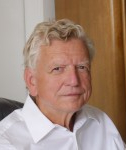
Dr. Klaus Gärtner
M4SIM, Germany
Title: Mathematical semiconductor transport models, energy functionals and preserving qualitative analytic properties in the discrete case for all spatial step sizes using Delaunay meshes.
Abstract:
The classical drift-diffusion model is still the backbone for many of today's
real world applications. It is used to illustrate that its basic mathematical
properties, like weak formulation and the use of test functions can be preserved
for finite volume methods and boundary conforming Delaunay meshes for all
spatial step sizes (h) and properly choosing implicit time discretizations.
Because stability is guaranteed as long as the analytical problem is stable,
these basic relations can guide 'mesh construction', because one is interested
in good ('best-') approximations of some rather general functionals and
additionally, special ones, like reaction rates, one or two contact currents,...
with a limited number of mesh points.
This is expected to hold for better approximations of the Boltzmann equation,
too, as long as explicit momentum (energy as a first step) approximations
are considered, that fulfill the H-theorem analytically, e.g., a
'group drift-diffusion theory' with mass-action-law like scattering reactions.
The interest grows with shrinking scales and higher voltages and essentially as
soon as the high energetic tail of the distribution function defines the effects
of interest and a local force approximation is insufficient to result in good,
energy dependent special reaction rates. Examples are reactions forbidden at
equilibrium or avalanche processes, that are defining the device functionality
and not the looming limit of operation.
For amplification and logic functionality one can expect that the algorithmic
complexity is well below a direct, sparse Keldysh formalism (NEGF) approach
($A^{-1} R A^{-H}$) as long as the state space (energy) is extended moderately.
Examples discussed are 3d detectors for astro- and high-energy physics developed
at https://www.hll.mpg.de/ and computed with Oskar3, my 'algorithmic
experimental device simulator'.
Biography:
I was born at Zittau (East Germany) 1950 - now I'm founder of M4SIM - the
device to push things of interest in the triangle defined by
a) parabolic and elliptic PDE's, b) algorithms to solve them numerically and
c) Delaunay meshes (due to stability properties on all meshes of that class)
in collaboration with an industrial partner.
Or: the questions that influenced my life all the time wherever things where
going on: at USI Lugano to get $A^{-1} R A^{-H}$ (the Keldysh formalism, or
NEGF, or ...) into pardiso (2015-2116, with Schenk),
at Berlin Mohrenstrasse (1998-2015, visiting professor
at KAUST 2011, and 1982-1990) in the numerical math group (John, B"ansch, Grund)
and a very productive collaboration with the analysis group, especially
Gajewski. The opposite end was meshing, which got a push in the collaboration
with Hang Si, who joined WIAS during 2002, because meshing is essential
from the application point of view and outside of the classical field of
numerical algorithms.
(1992-1998) at ETH Zurich numerical methods for semiconductor problems with
(Gutknecht, Fichtner) and a collaboration with Cray-Research: the start of the
pardiso sparse direct solver project with the Phd-student O. Schenk.
My interests in understanding problems in detail, from basic properties to
algorithms was amplified by my studies of Physics at Technical University
Dresden, the PhD in nuclear reactor physics (1968-1972, 1977) and the
work on neutron transport in fast breeders (1976-1981).